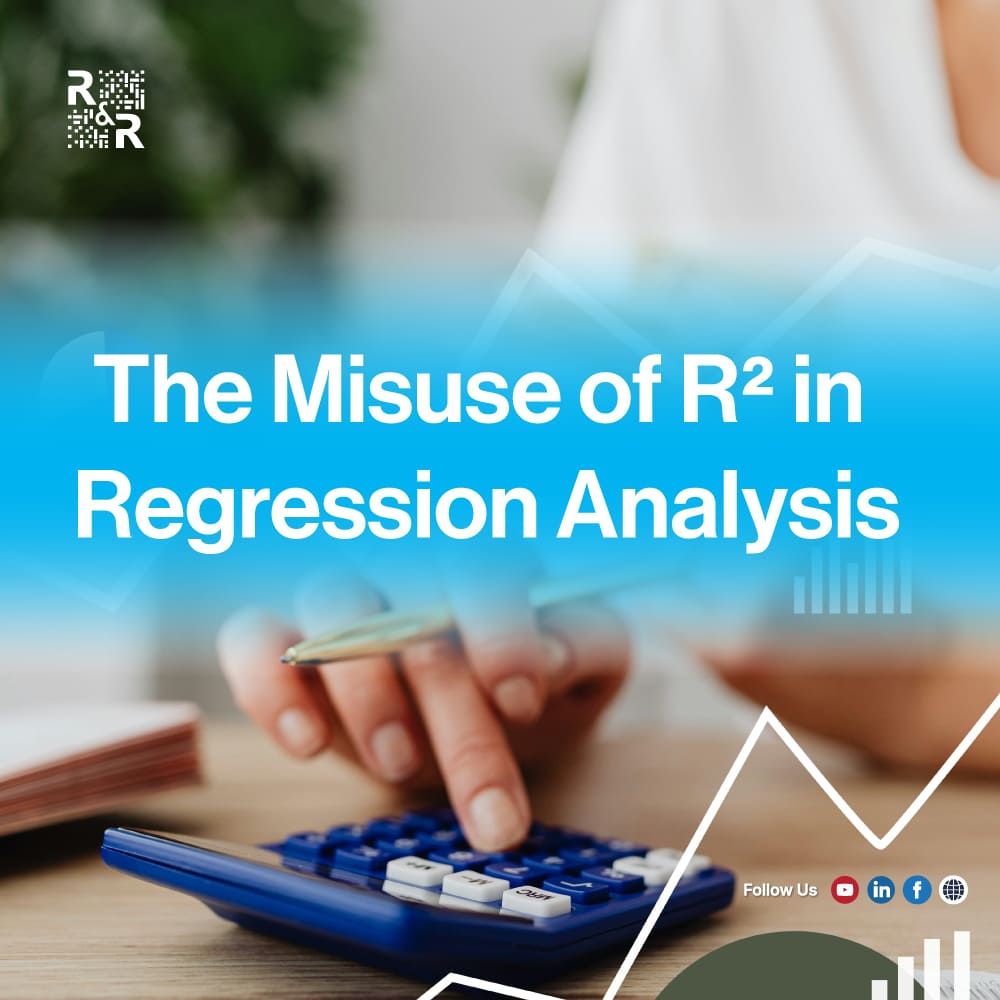What R² Actually Measures
- R² (coefficient of determination) indicates the proportion of variance in the dependent variable explained by independent variables. Wikipedia
- It ranges from 0 to 1 (or 0% to 100%).
- R² is an in-sample goodness-of-fit statistic—not a guarantee of predictive validity.
Why High R² Is Often Misleading
Overfitting & Inflated R²
- Adding more predictors (even irrelevant ones) always raises R².
- A model that overfits noise will show a high R² but fail on new data.
- In one study, median R² exceeded leave-one-out (LOO) cross-validated R² by ~40%. Taylor & Francis
Model Misspecification & Nonlinearity
- High R² can mask a wrong functional form. For example, when a linear model is fitted to a nonlinear process, R² may still be high.
- Omitted variable bias, heteroscedasticity, or multicollinearity can distort inference despite a high R².
Sampling Issues & Range Effects
- Narrow range of independent variables can inflate R² artificially.
- Small sample sizes with many predictors encourage spurious “perfect” R² (even R² =1) but with no external validity.
Better Metrics & Validation Techniques
Adjusted R²: A Penalized Alternative
- Adjusted R² adjusts for the number of predictors, penalizing trivial additions.
- It increases only when added variables improve explanatory power beyond chance. Datacamp
Cross-Validation & Leave-One-Out R²
- Use k-fold CV or LOO CV to estimate predictive performance, not just in-sample fit.
- LOOR² is robust to overfitting; economists found R² and adjusted R² exaggerated true predictive power by ~40% and ~21%. Taylor & Francis
Residual Diagnostics & Model Assumptions
- Always inspect residual plots to detect bias, heteroscedasticity, nonlinearity, or autocorrelation.
- Use AIC, BIC, predictive R², MAE/MSE alongside R² for more holistic evaluation.
Practical Tips for Researchers
- Do not present R² in isolation; always accompany it with diagnostics, adjusted metrics, and validation.
- When adding variables, monitor whether adjusted R² improves.
- Use cross-validation especially in predictive research models.
- In social science, even R² ~ 0.1 or 0.2 may be acceptable if predictors are significant.
- Be transparent: report training vs test R², residual issues, and theoretical justification.
R² is not magic. It’s a limited metric, useful only when contextualized and supplemented.
As an expert Research & Report Consulting firm, we guide researchers to avoid superficial metrics, strengthen models, and improve publication quality.
Have you encountered a model with very high R² that later failed in prediction? Share your experience below — let’s discuss pitfalls and remedies!
References
- “Why R-squared is worse than useless” — Recast Recast
- “How to Interpret R-squared in Regression” — Statistics By Jim Statistics By Jim
- Adjusted R-Squared explanations — Built In, DataCamp Built In+2DataCamp+2
- R² exaggeration over LOOR² in published regressions — Tandfonline study Taylor & Francis Online
- Misconceptions about R² in regression modeling ResearchGate
- Acceptable R² in social science models Munich Personal RePEc Archive
- Overfitting, model complexity limits Duke People
- Definition of coefficient of determination Wikipedia

